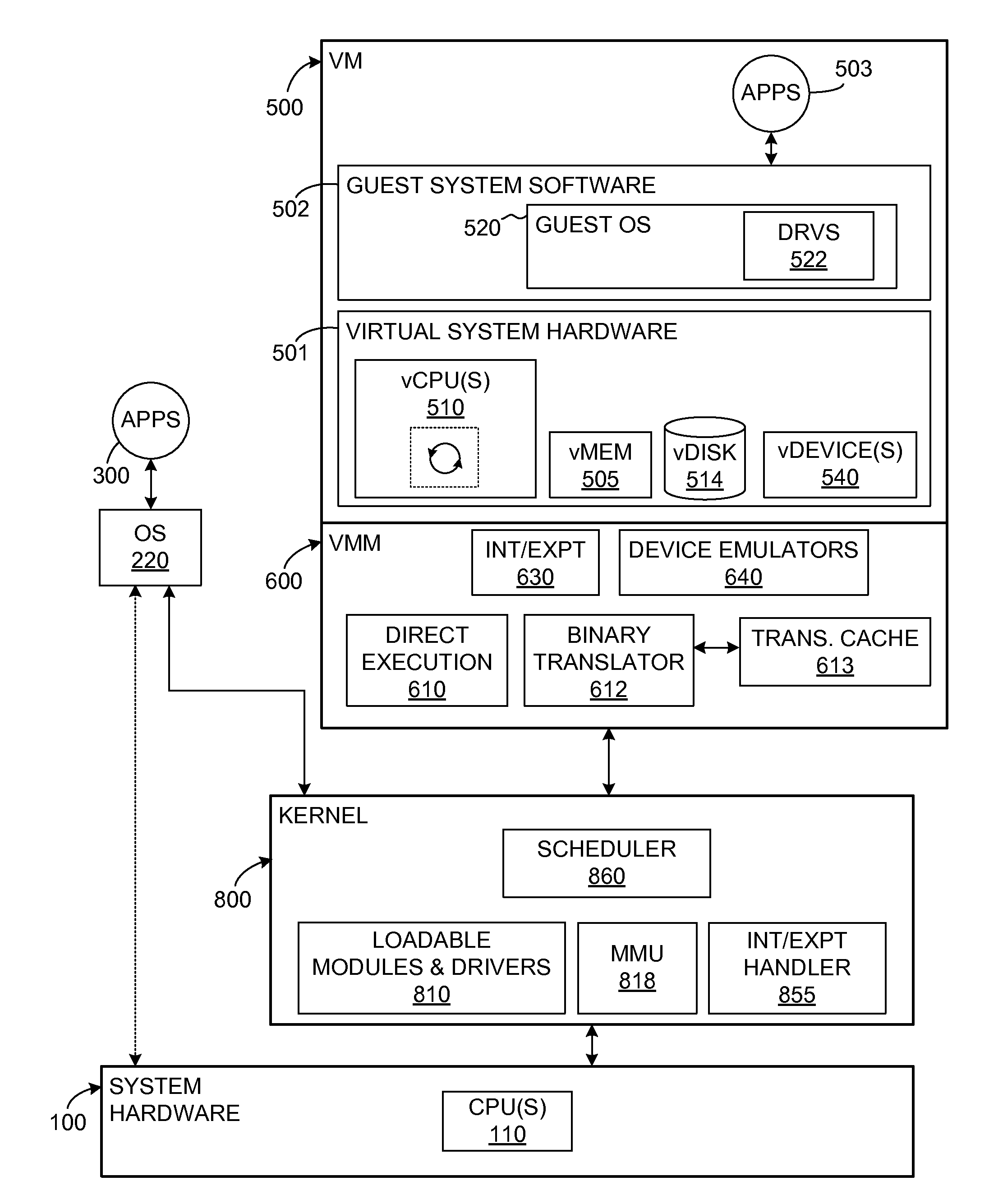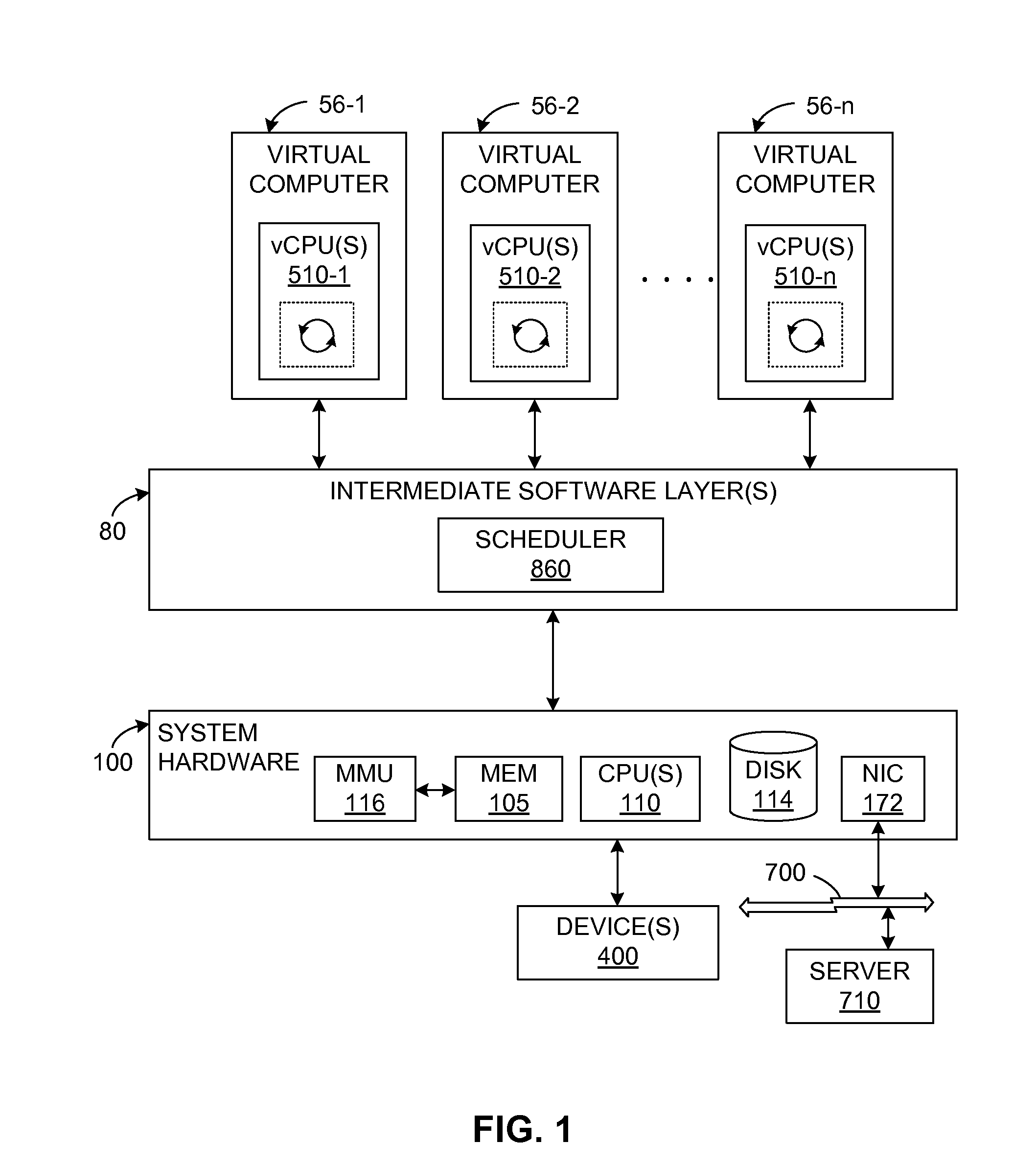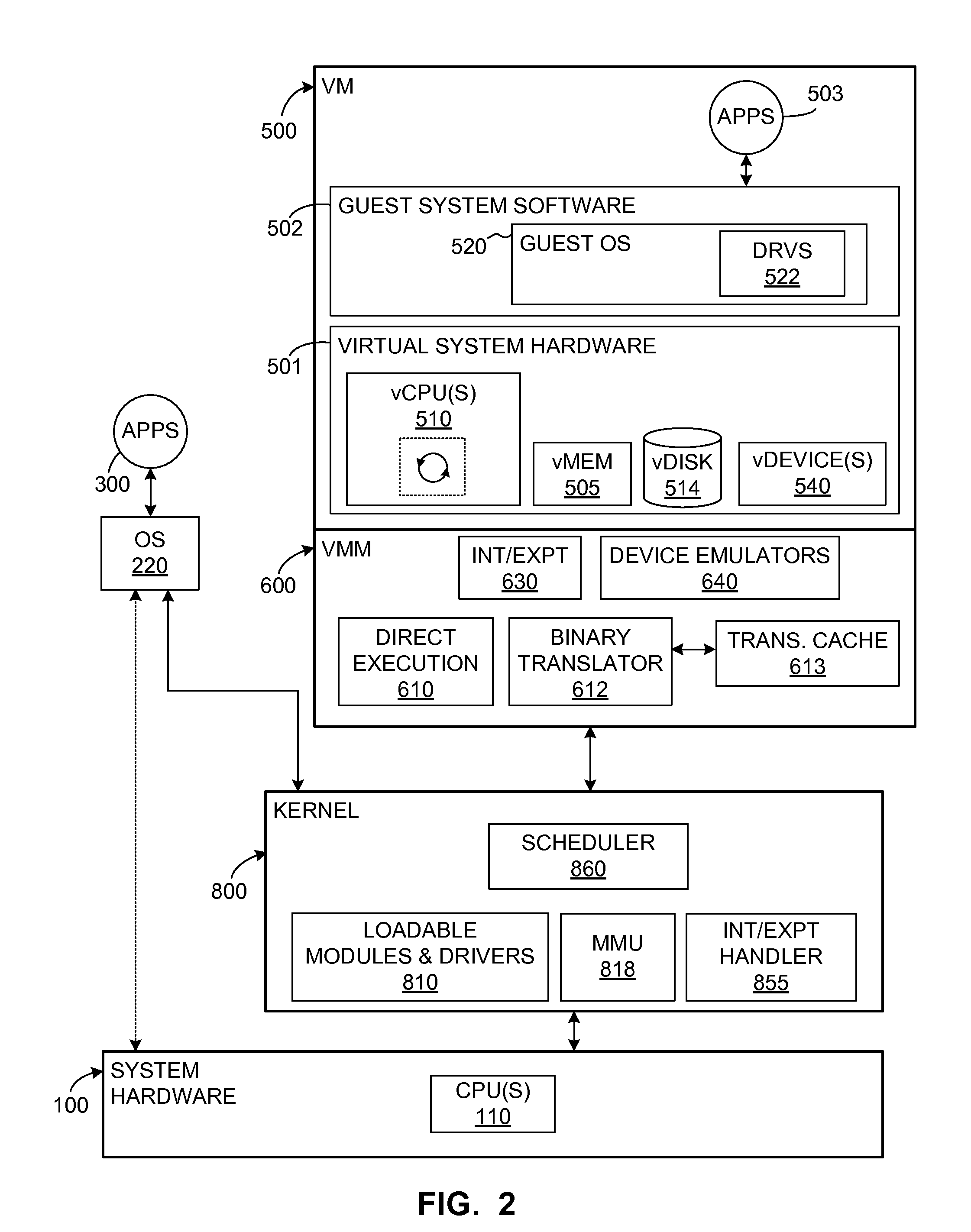Selective descheduling of idling guests running on a host computer system
a computer system and guest technology, applied in the field of task scheduling mechanisms, can solve the problems of significant idle time, single machine virtual or physical problems, and potentially prolonged time periods of idle processors,
- Summary
- Abstract
- Description
- Claims
- Application Information
AI Technical Summary
Benefits of technology
Problems solved by technology
Method used
Image
Examples
Embodiment Construction
Introduction
[0029]This invention provides a software mechanism that efficiently exploits the structure of idle loops of modern operating systems so as to deschedule idling guest systems that are running on a common hardware platform or are otherwise sharing CPU or other hardware resources. The invention is particularly advantageous in the context of virtualized computer systems and it is applicable not only to a wide range of modern stock single- and multi-processor guest operating systems, but also to guest operating systems customized for virtualization. Before delving into the specifics of the invention, the general structure of a virtualized computer system is described by way of example
General System Configuration
[0030]FIG. 1 illustrates one example of a system in which the invention may be incorporated. A system hardware platform 100 includes one or more processors (CPUs) 110, system memory 105, and at least one storage device, which will typically be a disk 114. The system me...
PUM
 Login to View More
Login to View More Abstract
Description
Claims
Application Information
 Login to View More
Login to View More - R&D
- Intellectual Property
- Life Sciences
- Materials
- Tech Scout
- Unparalleled Data Quality
- Higher Quality Content
- 60% Fewer Hallucinations
Browse by: Latest US Patents, China's latest patents, Technical Efficacy Thesaurus, Application Domain, Technology Topic, Popular Technical Reports.
© 2025 PatSnap. All rights reserved.Legal|Privacy policy|Modern Slavery Act Transparency Statement|Sitemap|About US| Contact US: help@patsnap.com



